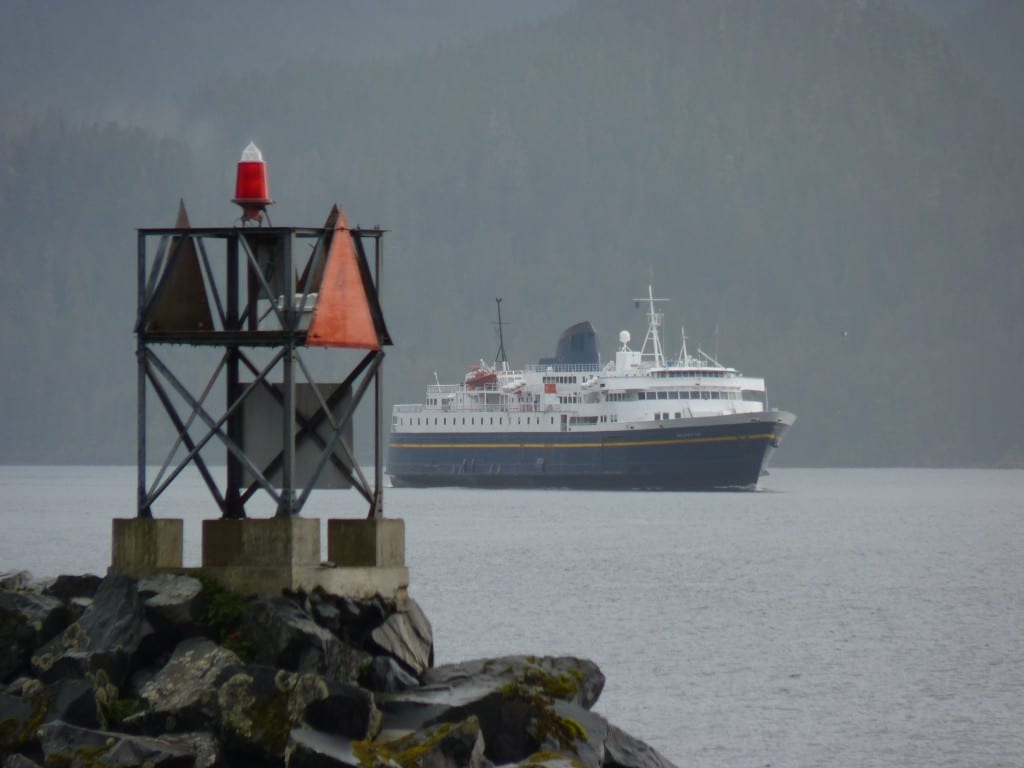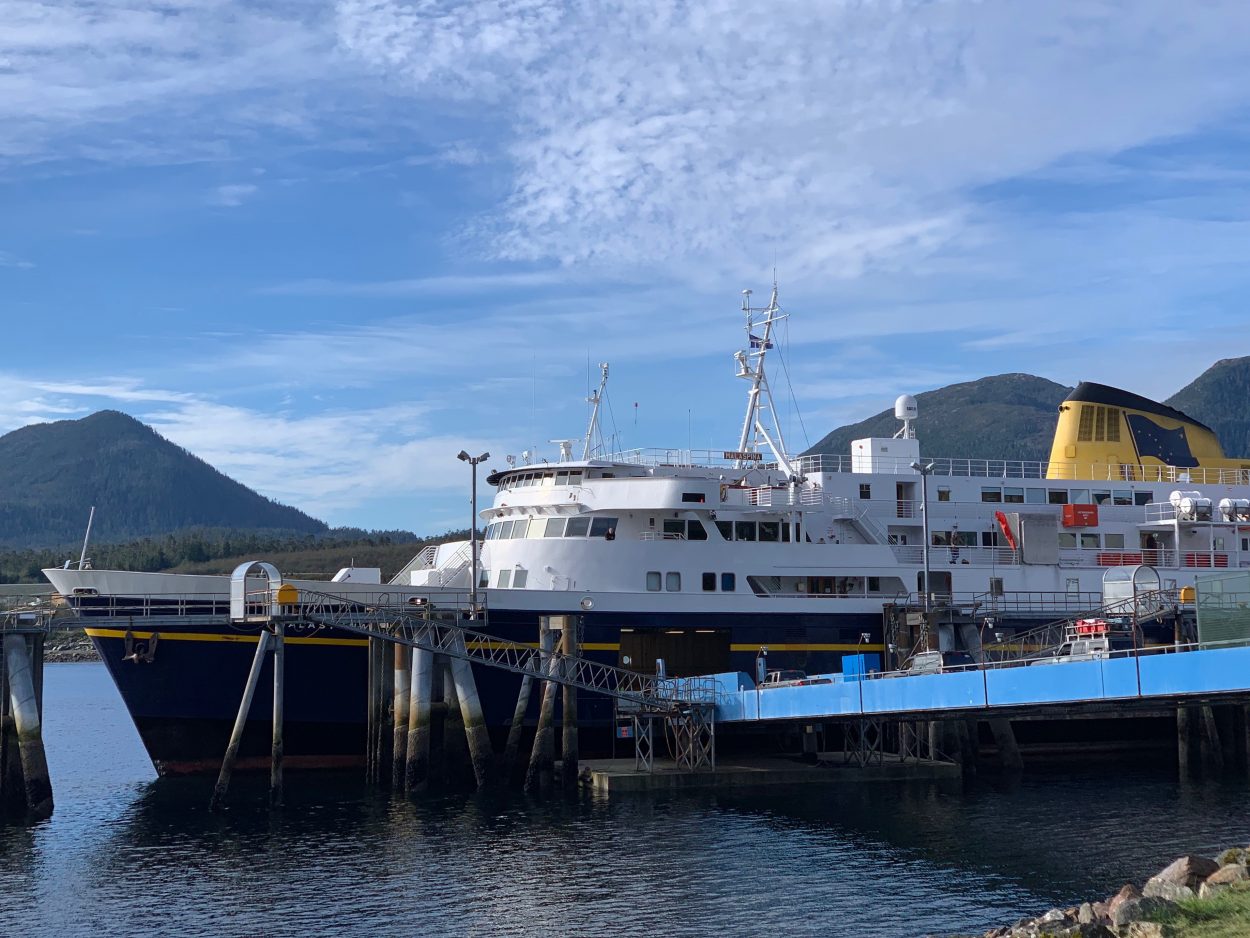
One of Alaska’s original ferries is being taken out of service next month. It’ll be tied up and its crew reassigned. But marine engineers warn that without a crew keeping things shipshape, things break down quickly. And there are questions whether the Malaspina’s trip south could be its last as an Alaska ferry.
Transportation officials announced they’re it off the winter schedule for a simple reason: the 56-year-old ship needs an estimated $16 million in steel work. And the state say that’s not in the current budget.
By January 10 the ferry will be unmanned and tied up indefinitely. That means its systems are shut down, lines are drained and the equipment is secured.
There will be power on board. State ferries spokesman Sam Dapcevich says that should help prevent damage.
“We keep the vessel heated and we make sure that humidity is controlled to protect equipment from rust,” Dapcevich told CoastAlaska.
Retired ferry workers say it’s not the first time the ship has been taken out of service. In the early 1990s the state considered selling the Malaspina and tied it up in Auke Bay without power for a winter. But then the ship was needed the following the spring, so they had to restart the ship.
“When we got on board, the fuel system on the main engines was pretty much destroyed once we started running it again,” recalled former marine highway engineer George Danner, who retired in 2007.
He was in charge of maintenance on the Malaspina for most of the 1990s. He says a few years later the state decided to sideline the Malaspina again.
But engineers like Danner convinced management to assign a crew to service the Malaspina while she was tied up in Ketchikan.
“When we laid it up the second time, we knew what to do,” he said. “And therefore, we had the ability to maintain the engines. We would roll them over once a week. We’d start the generators.”
There’s no plan for that this time around. The lay up will be completely “unmanned” with no crew assigned to the ship which already needs a lot of work.
Outside experts in maritime maintenance say it’s not uncommon in the industry to temporarily shut down a ship that’s not needed.
“Essentially you are putting it on the side and you are not so much forgetting about it, but deferring any maintenance that’s required on it,” said David Satterwhite, a faculty member teaching marine engineering technology at Cal Maritime in Vallejo, California.
But Satterwhite says deferred maintenance has other costs in the long run. It’s one thing if the vessel is at the end of its service life.
“But if you’re in a situation where someday you’re going to put that back to work, then of course you’re going to want to put the manpower into — at the very minimum — keeping lights on or having a regular crew,” he said.
And then there are regulations to consider.
State ferries are inspected annually by the Coast Guard. The Malaspina’s current certificate of inspection expires in February
If a ferry’s certificate lapses while it’s out of service, a simple renewal likely won’t be an option later on, Lt. Nicholas Capuzzi, the Coast Guard’s assistant chief of inspections in Juneau, told CoastAlaska.
That means if and when the ship is brought back into service, the Malaspina would need to apply for a brand new certificate.
“Which is a deeper level of scrutiny,” Capuzzi said. “It includes stuff like operational tests of almost all the equipment on board and also depending on when the vessel was the last out of the water for inspection, it could require the vessel to be dry docked before being returned to service.”

Officially, state officials insist no long-term decision has been made about the vessel’s fate.
Veterans of the marine highway like George Danner say the state shouldn’t make decisions over its dwindling fleet that it can’t take back.
“I’ve been on two or three ships and lay up that all of a sudden something happens to another ship and they want your ship back on the line now,” Danner said. “Go ahead lay up the Mal, but put a crew on it. So when you do need it, you least have enough people there that know how to get it running and getting back in service.”
It’s not the first time in recent weeks that the state has decided to lay up a ferry rather than repair it. The ferry LeConte was abruptly taken out service after the state balked at investing $4 million in steel work for that ship. That’s left Southeast communities with fewer ferries or in some cases, no ferries at all.
All this is going on after the Dunleavy administration commissioned a $250,000 study on reshaping the marine highway.
That report by Anchorage firm Northern Economics was delivered to the transportation agency last month.
The economic consultants were retained to work with the Dunleavy administration to “identify potential reductions of the state’s financial obligation and/or liability as they relate to (the ferries).”
In other words, it’ll recommend which vessels to keep, sell or scrap.
However, those recommendations are still under wraps. CoastAlaska filed a records request for a copy of the study and was denied. State officials say the report remains in draft and its findings won’t be public until mid-December.
By then the Malaspina will have already delivered its last load of passengers, vehicles and freight.
The Malaspina was built in 1963 and is part of the original fleet of mainline ferries. Its final voyage is scheduled for December 2.





